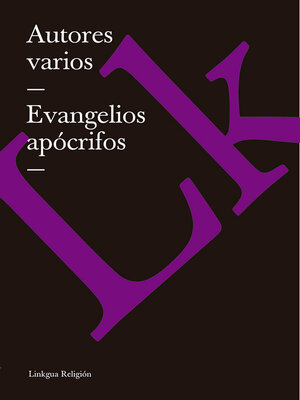
Sign up to save your library
With an OverDrive account, you can save your favorite libraries for at-a-glance information about availability. Find out more about OverDrive accounts.
Find this title in Libby, the library reading app by OverDrive.



Search for a digital library with this title
Title found at these libraries:
| Library Name | Distance |
|---|---|
| Loading... |
The Apocryphal Gospels were written in the first centuries of Christianity and relate stories about Jesus, which contain episodes that were omitted from the canonical texts. They were not accepted by the Catholic Orthodoxy, and among them are found the Dead Sea Scrolls and the texts of Nag Hammadi. They were given the name "Gospels" for their qualities which are similar to the four Gospels admitted into the canon of the New Testament. However, many of them do not have an evangelical style. Some of these writings appeared in gnostic communities with the intention of containing hidden words (or "apokryphos" in Greek). And it should be mentioned that the term apocryphal did not indicate falsehood but mystery. These messages, hidden between the discussions and attributed to Christ, were reserved for the people who were initiated into those communities.
Los Evangelios apócrifos fueron escritos en los primeros siglos del cristianismo y cuentan historias relativas a Jesús, que contienen episodios omitidos en los textos canónicos. No fueron aceptados por la ortodoxia católica, y entre ellos se encuentran los rollos del mar muerto y los de Nag Hammadi. Se les dio el nombre de Evangelios por su aspecto similar a los cuatro evangelios admitidos en el canon del Nuevo Testamento. Sin embargo, muchos de ellos no tienen un estilo evangélico. Algunos de estos escritos aparecieron en comunidades gnósticas, con la intención de contener palabras ocultas (en griego, apokryphos). Y cabe comentar que el término apócrifo no indicaba en sus orígenes falsedad sino misterio. Estos mensajes, ocultos entre los discursos y atribuidos a Cristo, estaban reservados a los iniciados en esas comunidades.
Los Evangelios apócrifos fueron escritos en los primeros siglos del cristianismo y cuentan historias relativas a Jesús, que contienen episodios omitidos en los textos canónicos. No fueron aceptados por la ortodoxia católica, y entre ellos se encuentran los rollos del mar muerto y los de Nag Hammadi. Se les dio el nombre de Evangelios por su aspecto similar a los cuatro evangelios admitidos en el canon del Nuevo Testamento. Sin embargo, muchos de ellos no tienen un estilo evangélico. Algunos de estos escritos aparecieron en comunidades gnósticas, con la intención de contener palabras ocultas (en griego, apokryphos). Y cabe comentar que el término apócrifo no indicaba en sus orígenes falsedad sino misterio. Estos mensajes, ocultos entre los discursos y atribuidos a Cristo, estaban reservados a los iniciados en esas comunidades.







